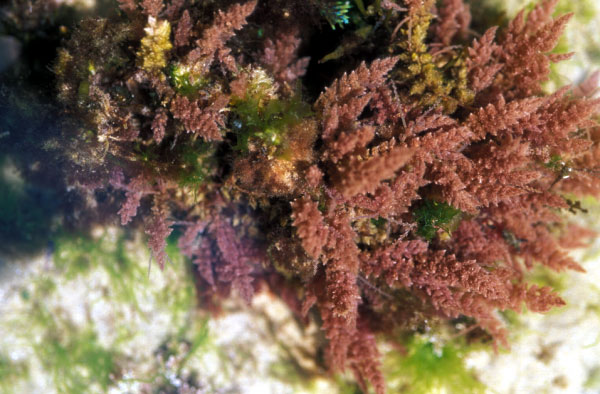Falkenbergia rufolanosa Harvey
Pale purplish-red, quickly degenerating when removed from the water and becoming distinctly orange; fronds bushy, with a cylindrical axis to1 mm wide and 200 mm long. Both phases readily reproduce vegetatively. Photographs by M.D. Guiry

Ulvan, a bioactive marine sulphated polysaccharide as a key constituent of hybrid biomaterials: A review
Ulvan, a sulphated polysaccharide located in the cell walls of green algae that possesses unique structural properties albeit its repeating unit shares chemical affinity with glycosoaminoglycans, such as hyaluronan and chondroitin sulphate, has been increasingly studied over the years for applications in the pharmaceutical field. The increasing knowledge on ulvan’s chemical properties and biological activities has triggered its utilization in hybrid materials, given its potential efficacy in biomedical applications. In the present review, the use of ulvan in the design of different biomaterials, including membranes, particles, hydrogels, 3D porous structures and nanofibers, is presented. The applications of these structures may vary from drug delivery to wound dressing or bone tissue engineering. In this context, general information regarding the structure and chemical variability, extraction processes, physicochemical properties, and biological activities of ulvan is reported.


